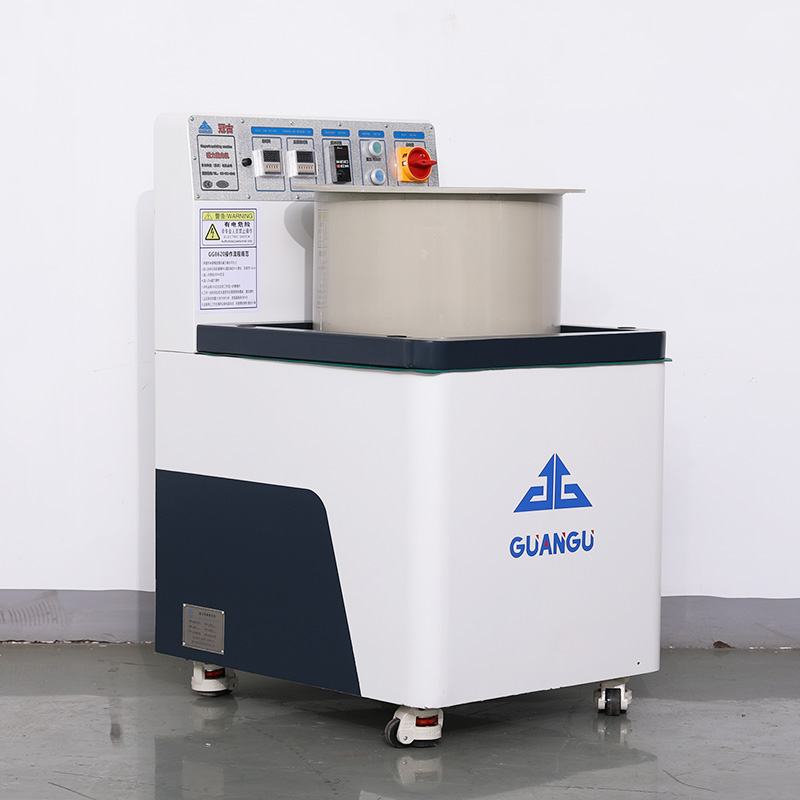With the rapid development of science and technology, China's manufacturing industry is facing unprecedented opportunities and challenges. In the pursuit of high quality and high efficiency of the background, additive manufacturing technology and magnetic polishing technology came into being, for the manufacturing industry has injected new vitality. This paper will briefly introduce these two technologies and their applications in the manufacturing industry.

1. Overview
Additive Manufacturing technology (Additive Manufacturing, referred to as AM) is a digital model based on the way to manufacture parts by stacking materials layer by layer. Compared with traditional subtractive manufacturing, additive manufacturing has the advantages of high design freedom, high material utilization, and short production cycle. In recent years, additive manufacturing technology has been widely used in aerospace, biomedical, mold manufacturing and other fields.
2. Technical advantages
(1) High degree of design freedom: additive manufacturing technology is not limited by traditional processing technology, which can realize the integrated manufacturing of complex structures and improve the design innovation ability.
(2) High material utilization rate: according to the shape and structural characteristics of the parts, material distribution can be reasonably arranged to reduce material waste.
(3) Short production cycle: no need for mold manufacturing, shortening the product development and production cycle.
(4) Personalized customization: meet personalized needs, realize single-piece, small batch production.
3. Application cases
In China's aerospace field, additive manufacturing technology has been successfully applied to the manufacture of aircraft parts. For example, COMAC has used additive manufacturing technology to produce some parts of the C919 large airliner, improving production efficiency and reducing costs.
1. Overview
Magnetic polishing technology is the use of magnetic abrasives under the action of a magnetic field, a new processing method for grinding and polishing workpieces. Compared with the traditional polishing technology, magnetic polishing has the advantages of high polishing efficiency, good processing quality and wide application range.
2. Technical advantages
(1) High polishing efficiency: magnetic polishing utilizes the rotation and vibration of magnetic abrasive to realize rapid grinding of the workpiece and improve polishing efficiency.
(2) Good processing quality: magnetic polishing can realize uniform, fine grinding effect, improve the surface finish of the workpiece.
(3) Wide range of application: applicable to a variety of shapes, sizes and materials of the workpiece, especially suitable for complex shapes of the workpiece polishing.
(4) Environmental protection and energy saving: in the process of magnetic polishing, the abrasive can be recycled, reducing environmental pollution.
3. Application cases
Magnetic polishing technology has a wide range of applications in aerospace, automotive, electronics and other fields. For example, in the manufacturing process of aircraft engine blades, the use of magnetic polishing technology can effectively improve the surface finish of the blade, reduce airflow resistance and improve engine performance.
The application of additive manufacturing and magnetic polishing technology in the manufacturing industry is complementary. On the one hand, additive manufacturing technology can realize the rapid manufacturing of complex structural parts; on the other hand, magnetic polishing technology can improve the surface quality of parts to meet the high precision requirements. Combining the two helps to improve the overall level of China's manufacturing industry.
Looking ahead, China should continue to increase the research and development of additive manufacturing and magnetic polishing technology, promote industrial innovation, and provide strong support for the transformation and upgrading of the manufacturing industry. At the same time, enterprises should follow the technology development trend, actively explore new manufacturing processes, improve product quality and competitiveness, and help China's manufacturing industry to move towards the high-end of the global value chain.